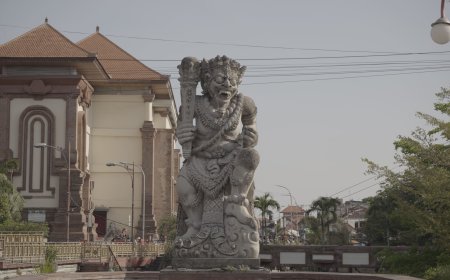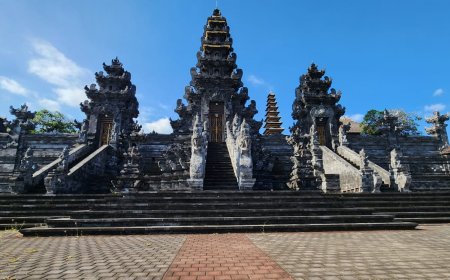The History of Luhur Mekori Temple: The Rivalry Between Naga Gombang and Naga Rarik
The history of the creation of Pura Luhur Mekori is closely tied to the myth of the conflict between Naga Rarik and Naga Gombang. This battle was sparked by Naga Rarik’s desire for revenge against Naga Gombang, whose actions had destroyed Naga Rarik’s family. The story not only tells of their struggle but also highlights extraordinary sacrifices and a spiritual journey that ultimately led to moksha.
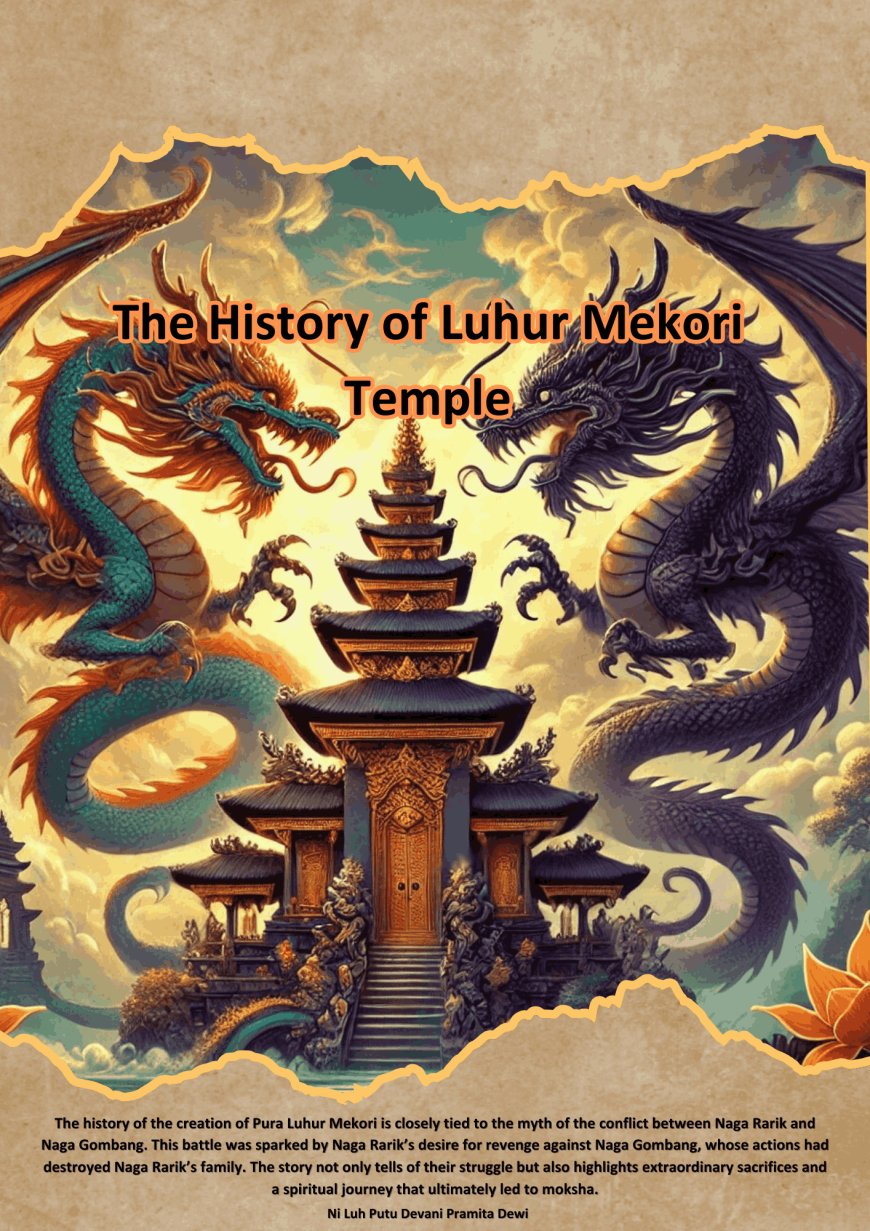
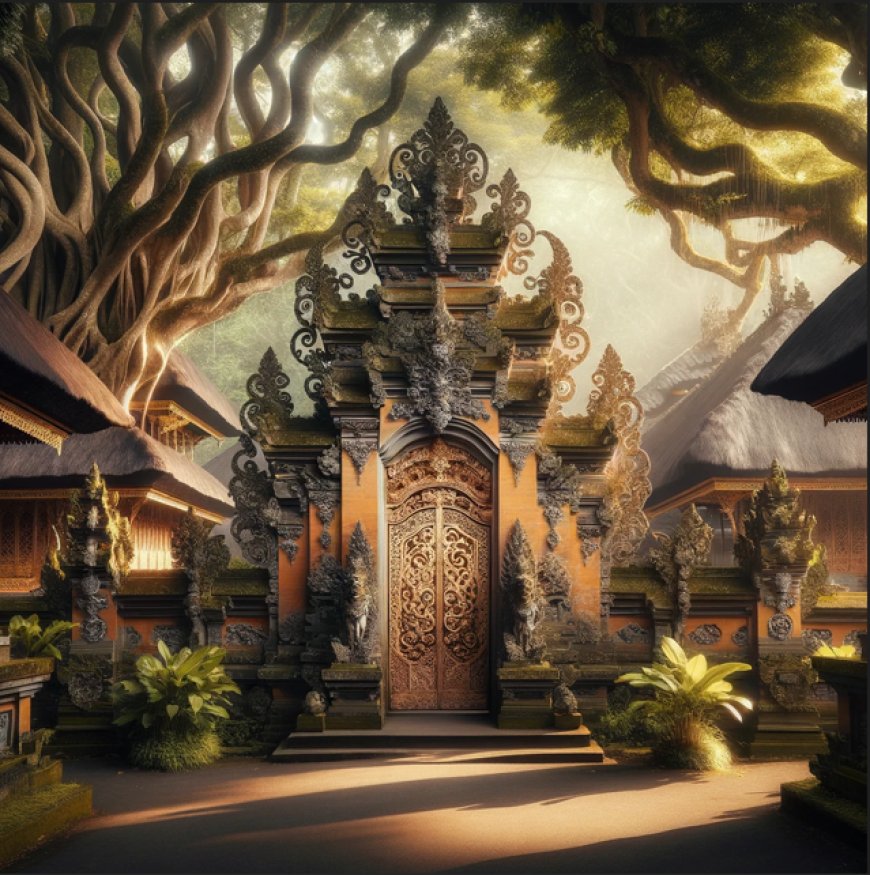
Illustration of a Luhur Mekori Temple (Source : Personal Collection)
Pura Luhur Mekori is situated on the main road connecting Pupuan and Tabanan. This temple is not only a place of worship but also holds a rich history and unique features that make it fascinating. The name "Pura Luhur Mekori" derives from the word ‘Mekori’, which consists of ‘Kori’, meaning a gate or a candi kurung (enclosed temple gate), and the prefix ‘Me’, meaning "having a gate" or "having an enclosed temple gate." Visually, Pura Luhur Mekori resembles a gate flanked by two large bunut trees, enhancing its sacred and mystical aura.
According to local beliefs, the name "Mekori" originally came from "Mas Kori," as some individuals with supernatural abilities perceived the gate of Pura Luhur Mekori to be made of gold. Although it appears ordinary, this temple is considered a sacred site that holds great spiritual power. The two large bunut trees flanking the temple are believed to be guardians of the mystical gate, protecting the temple from negative influences and preserving its sanctity.
Pura Luhur Mekori is closely linked with the myth of the rivalry between Naga Gombang and Naga Rarik. Long ago, in a small village named Kentel Gumi, there lived a husband and wife with their two children, a boy and a girl. They lived modestly, earning their living as farmers. The village, surrounded by dense forests and clear rivers, silently witnessed a magical tale that would change their destiny.

Picture of a woman discover a snake (Source : Personal Collection)
One day, the mother went into the forest to collect firewood. After gathering enough wood, she prepared to return home but discovered that her axe was missing. Anxiously, she searched the forest but could not find it. Realizing the danger of being alone in the forest at noon, she made a vow to nature: whoever found her axe, if a woman, would become her sister, and if a man, would become her husband.
Soon after, she heard a cough from a cave beneath a large tree. She approached the source of the sound and was shocked to find a large snake with piercing eyes, its tail coiled around her axe. Despite her fear, she was bound by her vow, and fate brought her together with the snake. Under the influence of the snake's magic, they lived as husband and wife.
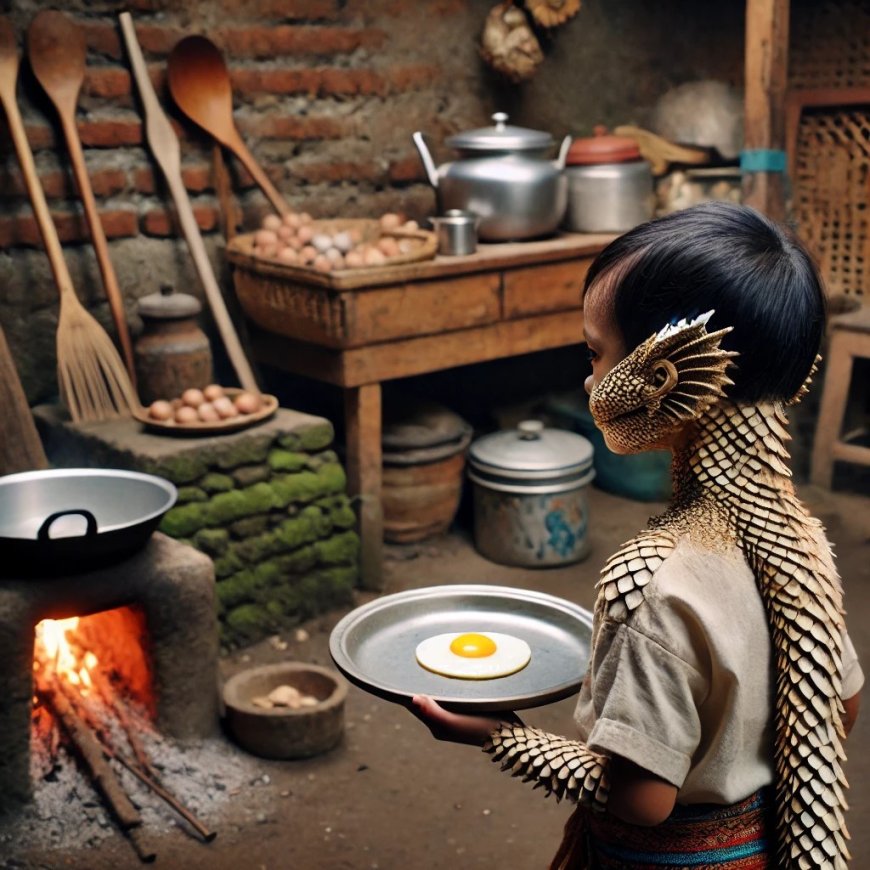
Illustration of the boy's skin turning scaly (Source : Personal Collection)
Over time, the children noticed something strange about their mother's behavior, as she entered the rice barn every morning. Curiosity drove the boy to check the barn without his mother’s knowledge. Inside, he found five snake eggs on top of a pile of rice. The egg in the center stood upright, resembling a chicken egg. Feeling hungry, he decided to fry the egg. However, something odd occurred; the seemingly ordinary egg multiplied, filling the plate and even overflowing into the bathroom when placed there.
After eating the egg, the boy's body began to change, his skin becoming scaly like a snake. This event marked the turning point that exposed his mother’s illicit relationship with the large snake. The father, angry and disappointed, cast his wife out, feeling betrayed and humiliated. Meanwhile, the boy, now transformed into a half-snake creature, became known as Naga Rarik.
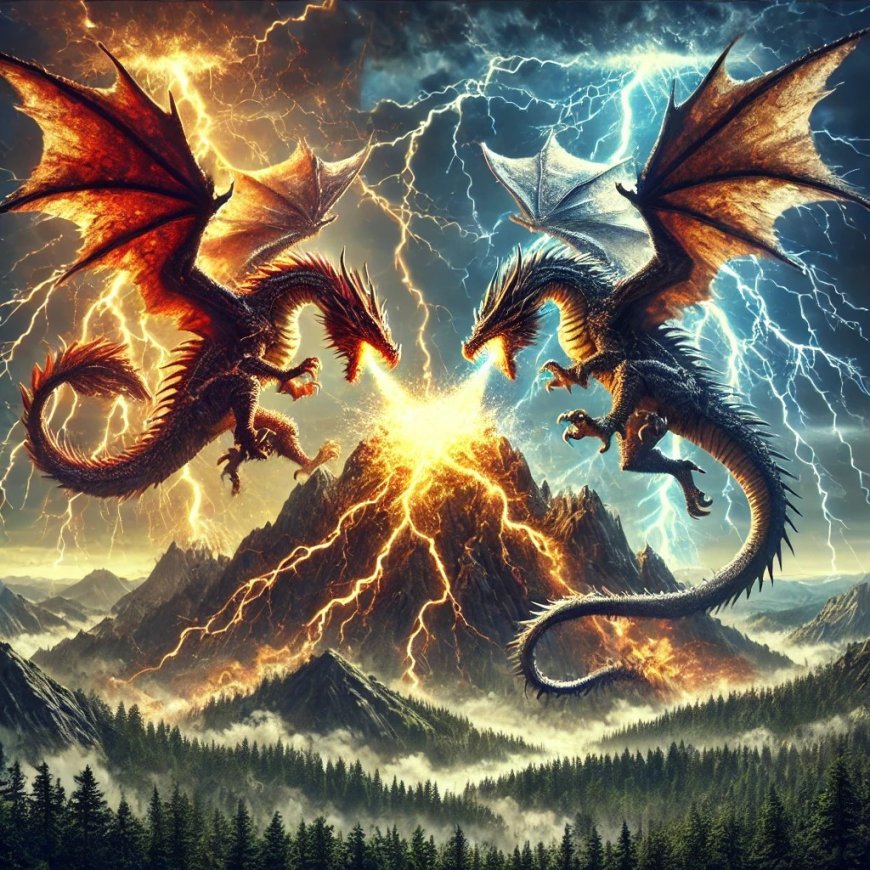
Illustration of the battle between Naga Rarik and Naga Gombang (Source : Personal Collection)
Realizing the consequences and the impact of these events, the father decided to engage in prayer, seeking forgiveness and guidance from Ida Sang Hyang Widhi. During his deep meditation, he received a revelation that both his children would become protectors of the people, but they needed to find a location known as Puser Jagat, believed to be the center of the universe. Naga Rarik, now reborn as a powerful dragon, vowed to defeat Naga Gombang, his arch-enemy whom he blamed for his suffering and his family's misfortune.
Naga Rarik succeeded in defeating Naga Gombang after a long battle that shook the natural world. With his victory, Naga Rarik, along with his sister Ayu Mas Sari, embarked on a journey to find Puser Jagat. They traveled through dense jungles, crossed great rivers, and passed through remote villages, following spiritual clues given in their father's meditative visions.

Illustration of Ayu Mas Sari leave by Naga Rarik at the market (Source : Personal Collection)
During their journey, they arrived at a bustling market. Naga Rarik, feeling exhausted, asked Ayu Mas Sari to buy some jajan tape (traditional Balinese snacks), with the condition that she must not leave him. Ayu Mas Sari, loyal to her brother, went to find the requested food. However, it was then that Naga Rarik realized they had reached Puser Jagat. He felt a calling from nature, knowing that his time to enter Sapta Petala, the underworld where perfected souls reside, was near.
Naga Rarik had to decide to leave his sister at the market and merge with the Earth, achieving moksha (spiritual liberation), leaving a hole as a sign of his departure. Ayu Mas Sari, returning to the market to find her brother gone, heard a divine message instructing her to perform deep meditation at the hole. After a long period of meditation, Ayu Mas Sari also achieved moksha at the same place, merging with the universe.
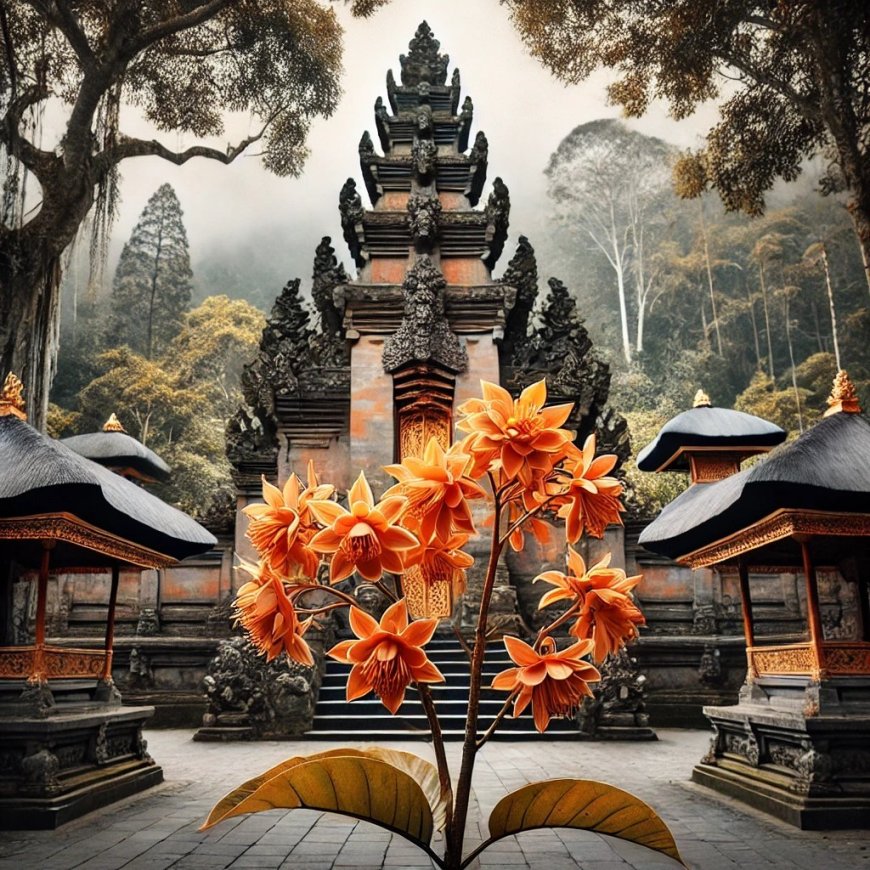
Illustration of a Luhur Mekori Temple (Source : Personal Collection)
At the site where Naga Rarik and Ayu Mas Sari attained moksha, a Soka tree with orange flowers, now known as Soka Bang, is said to have grown. This tree is deeply revered and preserved by the local community as a symbol of purity and the enduring legacy of Naga Rarik and Ayu Mas Sari. The flowers of this tree are used in traditional ceremonies as symbols of sacrifice, loyalty, and spiritual quest.
The story of Pura Luhur Mekori not only depicts the origins of the temple's name and architecture but also elevates the spiritual values and beliefs of the Balinese people. Through this tale, we see how belief in the supernatural world and the relationship between humans and nature are integral to spiritual life in Bali. Pura Luhur Mekori serves not only as a place of worship but also as a symbol of spiritual journey, sacrifice, and the pursuit of well-being for those who revere it.




















































